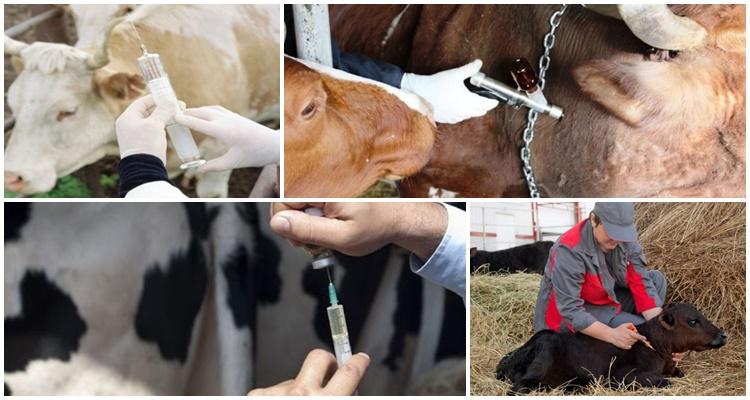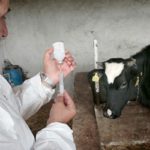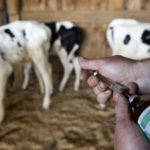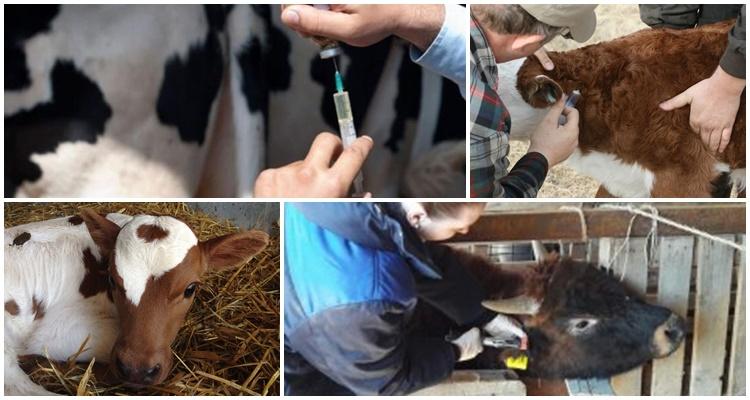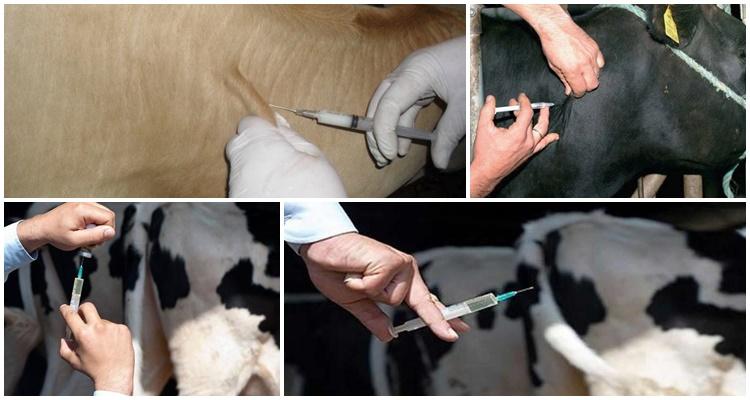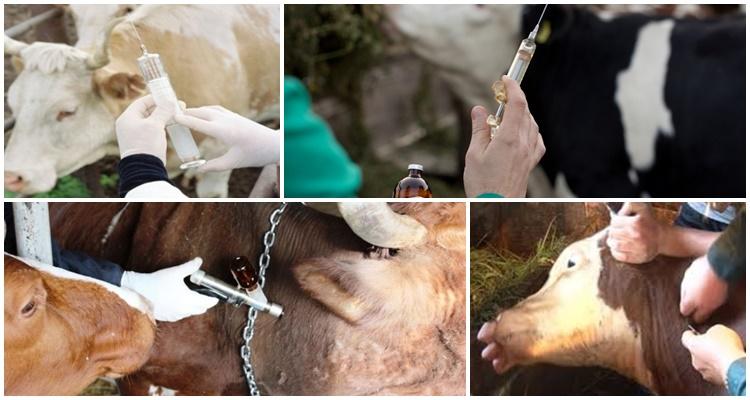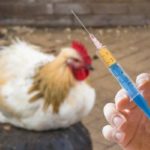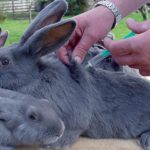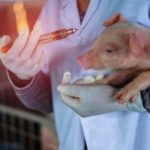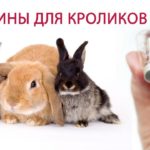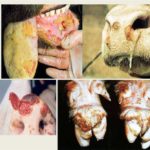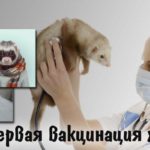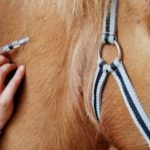Infectious diseases cause significant harm to livestock production: death and slaughter of sick animals, decreased productivity, and costs of treating sick animals. Vaccination of cattle livestock is the main method of disease prevention. You also need to remember that animals that have had certain types of infections become lifelong carriers of the virus.
Importance of the event
To raise healthy livestock, it is necessary to observe a certain set of measures: ensuring adequate feeding and living conditions, preventing the emergence and spread of diseases. It is vaccination that minimizes the risk of animal disease.
Farms use preventive vaccines against common diseases. Foot-and-mouth disease, leptospirosis, anthrax, and necrobacteriosis pose a danger to livestock, so animals are vaccinated in all regions.
Basic recommendations
The effectiveness of vaccination depends on the correct preparation of the vaccination schedule. It is also necessary to consider which vaccine is used:
- inactivated - the substance is based on killed bacteria or their fragments;
- live - the drug is created from weakened microorganisms - pathogens;
- associated – complex.
The vaccination campaign is carried out at certain intervals. As a rule, the vaccine administration schedule is calculated in accordance with the age of the animal. Most drugs require revaccination to consolidate the result.
Both large livestock farms and small ones must follow the vaccination schedule. There are no universal vaccination schemes, since factors need to be taken into account: the health status of animals, their conditions of detention, and the epizootic situation of the region. It should be borne in mind that vaccination of cattle does not cancel regular animal health checks, since when alarming symptoms appear, sick animals are separated from the herd in order to prevent the spread of infection.
What vaccinations are used
The list of vaccines recommended to prevent diseases will vary by region. It is advisable to use complex vaccines that provide immunity to several infections at once:
- "KOMBOVAK" is used to prevent infection with viral diarrhea, pasteurellosis, infectious rhinotracheitis, parinfluenza-3;
- “DEFENSOR 3” – inactivated rabies vaccine;
- "TAURUS" helps the animal's body acquire immunity against leptospirosis, infectious rhinotracheitis, viral diarrhea, parinfluenza-3;
- anthrax associated vaccine;
- inactivated vaccine against foot and mouth disease.
Vaccination preparations are produced by various companies. Before using substances, it is recommended to ensure their effectiveness and safety for animal health.
Vaccination of calves
In order for the calf's body to develop some immunity by the age of 2 months, it is necessary to follow a vaccination schedule from birth.
Age 12-18 days
Animals of this age are vaccinated against pasteurellosis, parainfluenza-3, infectious rhinotracheitis, and respiratory syncytial infection. It is recommended to use several vaccines for livestock production. "Bovilis Bovipast" is available in the form of injections for subcutaneous administration. The suspension has a light pink tint.
It is used to develop immunity against respiratory syncytial infections, pasteurellosis, and parainfluenza-3.
To protect young animals from infectious rhinotracheitis, the drug “Bovilis RSP” is used. The vaccine can be administered intramuscularly, but for calves, intranasal administration is recommended (one milliliter in each nostril).
In regions where the risk of salmonellosis infection is high, calves 10-12 days old are also vaccinated (1 ml of the drug). After 20 days, the vaccination is repeated, but a dose of 2 ml is administered.
Age 40-45 days
Young animals at the age of 30 days are initially administered the Combovac vaccine in a volume of 1 ml subcutaneously in the neck area. The drug is used for the prevention of rota and coronavirus diseases, infectious rhinotracheitis, viral diarrhea, parainfluenza-3. The calves are vaccinated again after 15 days. Thanks to Combovac, the animal’s body develops immunity to diseases in two weeks, which lasts for 8 months.
Animals at this age are also revaccinated with Bovilis Bovipast RSP. During the life of a calf from one and a half months to four months, it is recommended to vaccinate calves against ringworm and anthrax. Subsequently, anthrax vaccination is carried out annually.
Age 120-130 days
Animals of this age should receive a booster vaccination against infectious rhinotracheitis. Calves aged 125 days are revaccinated with the drug against leptospirosis (dose - 6 ml). The first time vaccination against leptospirosis is given to young animals aged 110 days (drug volume – 4 ml).
Individuals at the age of 135 days are given a vaccine (1 ml dose) against emphysematous carbuncle. The disease is not considered infectious, but leads to the death of animals. At risk are calves aged from 3 months to 3 years.
Vaccination of adults
Only healthy farm animals are allowed to be vaccinated. Vaccination of individuals weakened or infected with other diseases is carried out after recovery. Vaccination activities are carried out according to schemes.
For leptospirosis, 8 ml of vaccine is administered to cows aged 2 years.Older animals are given a 10 ml injection.
For vaccination against brucellosis, a live dry vaccine is used. The product is administered in a volume of 2 ml, subcutaneously. Animals are vaccinated for the first time when they are 4-6 months old, and again after 10 months. Already 3 weeks after the injection, the body develops immunity that lasts 11-12 months.
One of the common diseases is foot and mouth disease. The disease is acute in young animals. Since there are several subtypes of diseases, vaccines of types A, O, C, and “Asia-1” are used. The first vaccination is given to individuals aged 6 months. Revaccination is done after 60 days.
Is it possible to vaccinate pregnant cows?
Cows also need regular vaccinations during pregnancy. When preparing vaccinations, the type of drug and how many days are left before calving are taken into account:
- inactivated vaccine against infectious rhinotracheitis is administered to pregnant cows in the last three months of pregnancy. The drug with a volume of 10 ml is administered intramuscularly twice with an interval of 1 month;
- a month and a half before calving, cows are vaccinated against leptospirosis. The volume of the vaccine is selected depending on the age of the animal;
- Pregnant cows are vaccinated against colibacillosis. Primary immunoprophylaxis is carried out two months before calving. The injection is repeated after 10 days.
Veterinarians recommend vaccinating pregnant cows no later than 1.5-2 months before calving. You cannot vaccinate against anthrax (period 30 days after birth).
Vaccination is a mandatory procedure for raising cattle. Regular inspection of animals and a properly drawn up vaccination plan will help preserve animals and ensure the productivity of livestock farming. During the vaccination period, it is necessary to provide animals with careful care.

